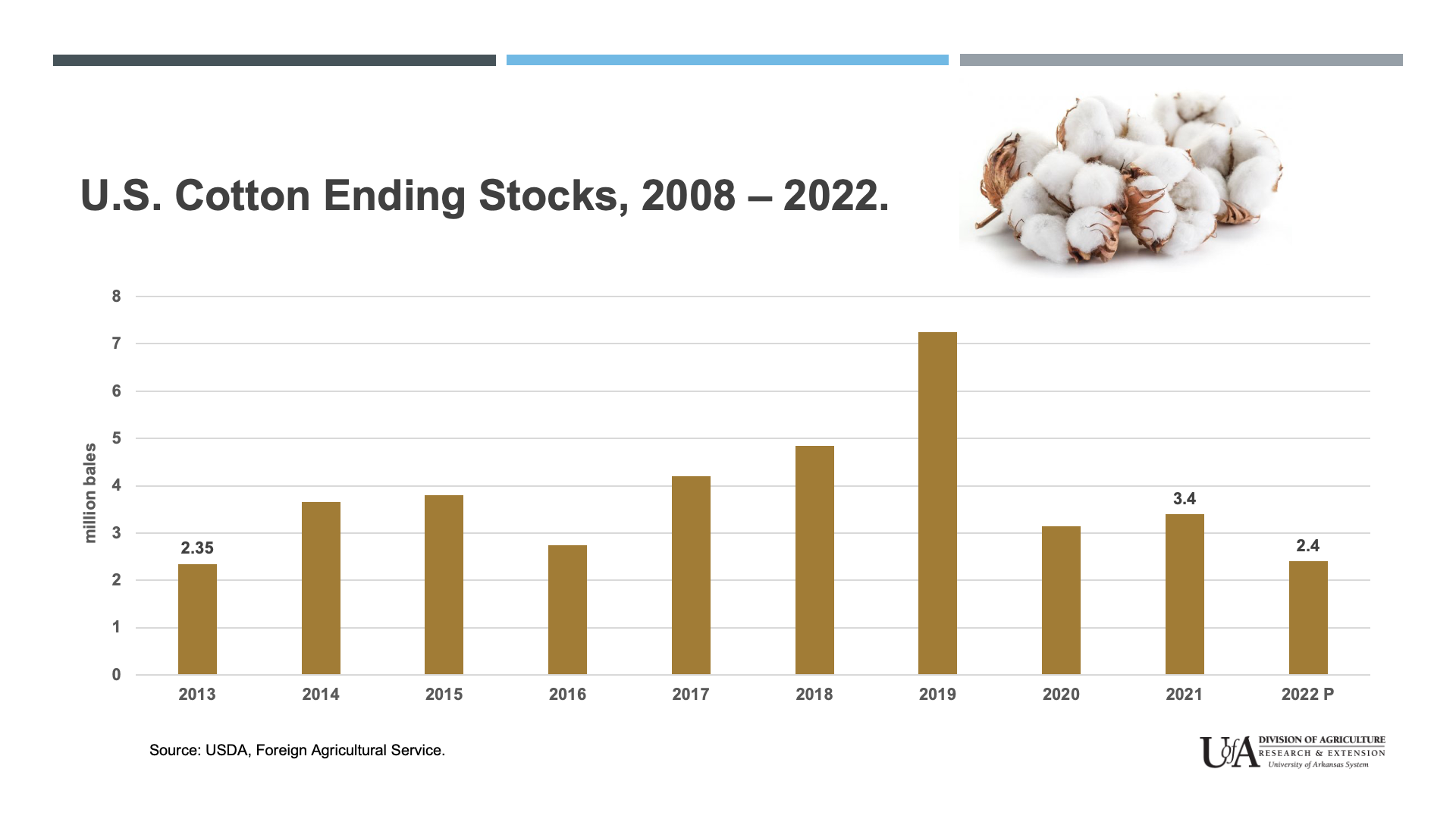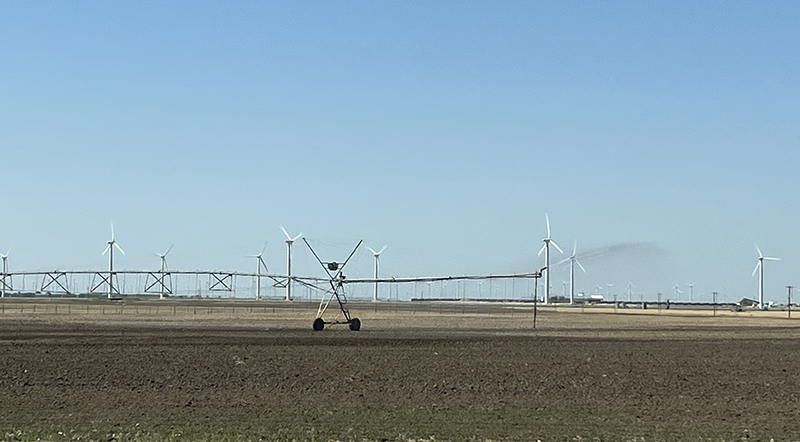July 14, 2022
Cotton market conundrum: Prices collapse as drought prompts dryland growers to abandon acres
By Mary Hightower
U of A System Division of Agriculture
Fast facts
- USDA cuts harvested acreage estimate by 590K acres
- Cotton trading lower since May
(480 words)
(Newsrooms: With 07-14-2022-ark-drought-corn-cotton; 07-14-2022-ark-drought-rice-soybeans and 07-14-2022-ark-soil-for-water)
JONESBORO, Ark. — U.S. cotton growers pressed by drought are expected to abandon almost a third of planted acres against a backdrop of collapsing prices that are causing a bit of head scratching, Scott Stiles, extension economist for the University of Arkansas System Division of Agriculture, said on Wednesday.
On Tuesday, the U.S. Department of Agriculture released its monthly supply/demand projections, with significant adjustments to the cotton balance sheet.
“This month USDA reduced its estimate of U.S. harvested cotton acreage by 590,000 to a total of 8.55 million,” Stiles said. “This implies that almost 32 percent of the 12.48 million planted acres will be abandoned this year.”
The majority of U.S. cotton acres are in Texas, most of which is non-irrigated. At 7.12 million acres, Texas accounts for 57 percent of the U.S. total.
With the large cut to harvested acres, USDA reduced the U.S. 2022 crop by 1 million bales to 15.5 million. Half of the production cut was offset by a 500,000-bale reduction in exports.“The bottom-line result was 2022 ending stocks falling from 2.90 million to 2.40 million bales—the lowest since 2013,” Stiles said.The tighter U.S. balance sheet didn’t seem to concern the futures market. Cotton closes downStiles said the “December contract closed at 90.84 cents on Tuesday and well off the mid-May high of $1.3379.”On Wednesday, the cotton market was lower again, “trading down to 86.20 at one point. That’s lowest we’ve seen the December contract since December 2, 2021,” he said.
“This massive 47-cent pullback in cotton prices is hard to rationalize with the U.S. crop getting smaller,” Stiles said. “A further reduction in crop size can't be ruled out in the coming months.
“With heavy investments being made in irrigation and insect management right now, this price collapse couldn’t come at a worse time,” he said. “Assuming an average yield for the state of 1,250 pounds per acre, we’ve lost over $585 per acre in market value over the past two months. Given the weather uncertainty surrounding this year’s crop, a price collapse of this magnitude was not expected.”
Other headwinds
Stiles said, “the cotton market is very much in tune with the health and direction of the general economy, and that may be the overriding market driver: growing concern about global recession and slowing consumer demand.”
“Higher interest rates tend to drive the value of the U.S. dollar higher, which is trading at 20-year highs now. This is a headwind for an export-dependent crop like cotton,” Stiles said.
Also Tuesday, USDA lowered its outlook for global mill use by 1.6 million bales. Mill use estimates for the 2022 crop were reduced in India, China, Bangladesh and Vietnam.
“All of which are key export markets for U.S. cotton,” Stiles said. “At 119.9 million bales, global mill use is now expected to be flat year on year.”
To learn more about Division of Agriculture research, visit the Arkansas Agricultural Experiment Station website: https://aaes.uada.edu. Follow on Twitter at @ArkAgResearch. To learn more about the Division of Agriculture, visit https://uada.edu/. Follow us on Twitter at @AgInArk. To learn about extension programs in Arkansas, contact your local Cooperative Extension Service agent or visit www.uaex.uada.edu.
About the Division of Agriculture
The University of Arkansas System Division of Agriculture’s mission is to strengthen agriculture, communities, and families by connecting trusted research to the adoption of best practices. Through the Agricultural Experiment Station and the Cooperative Extension Service, the Division of Agriculture conducts research and extension work within the nation’s historic land grant education system.
The Division of Agriculture is one of 20 entities within the University of Arkansas System. It has offices in all 75 counties in Arkansas and faculty on five system campuses.
Pursuant to 7 CFR § 15.3, the University of Arkansas System Division of Agriculture offers all its Extension and Research programs and services (including employment) without regard to race, color, sex, national origin, religion, age, disability, marital or veteran status, genetic information, sexual preference, pregnancy or any other legally protected status, and is an equal opportunity institution.
# # #
Media contact:
Mary Hightower
mhightower@uada.edu

